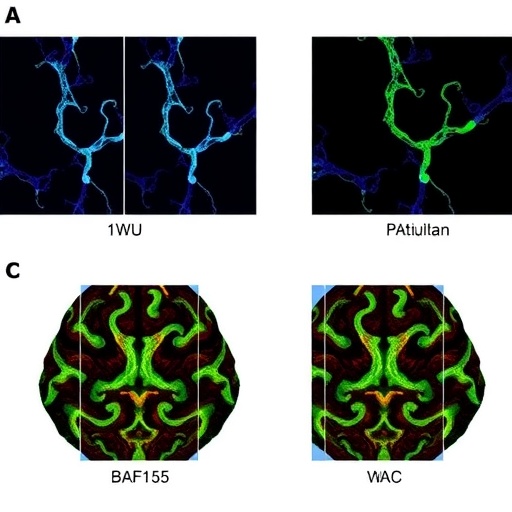Invented at Carnegie Mellon, the bivalent nucleic acid recognition platform is being used to develop treatments for rare genetic diseases

Credit: Carnegie Mellon University
The Scientist Magazine has named Janus bases as one of its Top 10 Innovations of 2019. Carnegie Mellon University Chemistry Professor Danith Ly invented the molecules, and they are being used to create new treatments for genetic diseases and disorders.
Janus bases are used to make two-sided synthetic analogs to DNA and RNA. The molecules can recognize and bind to DNA and RNA under normal physiological conditions, making them a promising platform for treating a wide range of genetic conditions including neurological diseases and muscular dystrophies.
Janus bases are being developed by NeuBase Therapeutics as a novel molecular platform for RNA-targeting drugs that silence or alter the expression of genes for the treatment of rare genetic diseases. NeuBase was founded and is led by CEO Dietrich Stephan, an alumnus of Carnegie Mellon’s Department of Biological Sciences. Ly serves as the company’s chief scientific officer.
Ly, who directs Carnegie Mellon’s Biomolecular Design and Discovery Institute, is a leading expert in creating peptide nucleic acids (PNAs). PNAs contain the same base pairs as DNA and RNA, but have a synthetic backbone. To further this technology, Ly created Janus bases, a set of bivalent nucleic acid recognition elements that can bind to any possible combination found in the genetic code. As a result, PNAs made with Janus bases can enter the double helix of DNA and RNA, search for detrimental sequences and bind to each side of the two strands and prevent a gene from malfunctioning.
Neubase uses PNAs with Janus bases to target and bind to mutant RNA and silence harmful genes by preventing translation or altering splicing of the genetic material. As a result, harmful proteins that cause disease are no longer produced.
###
Ly’s early work on Janus bases was made possible through a gift from the DSF Charitable Foundation to Carnegie Mellon’s Center for Nucleic Acids Science & Technology.
In its annual list of Top 10 Innovations, The Scientist identifies the latest and greatest tools, technologies and techniques in the life sciences. The innovations included on the list are selected by expert panels of independent judges. The Scientist is a publication for life-science professionals that is dedicated to covering a wide range of biological fields.
Media Contact
Jocelyn Duffy
[email protected]
412-268-9982
Original Source
https:/




